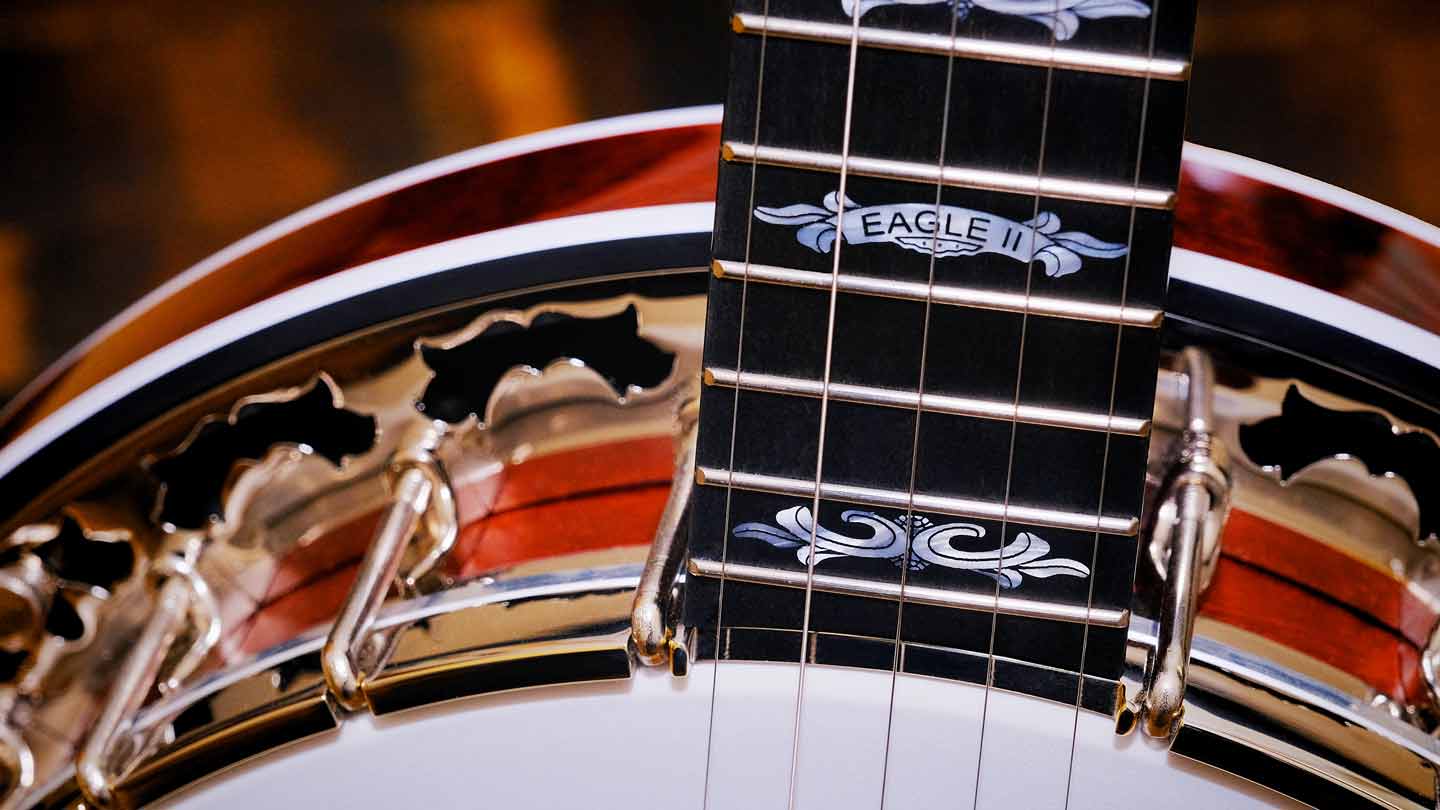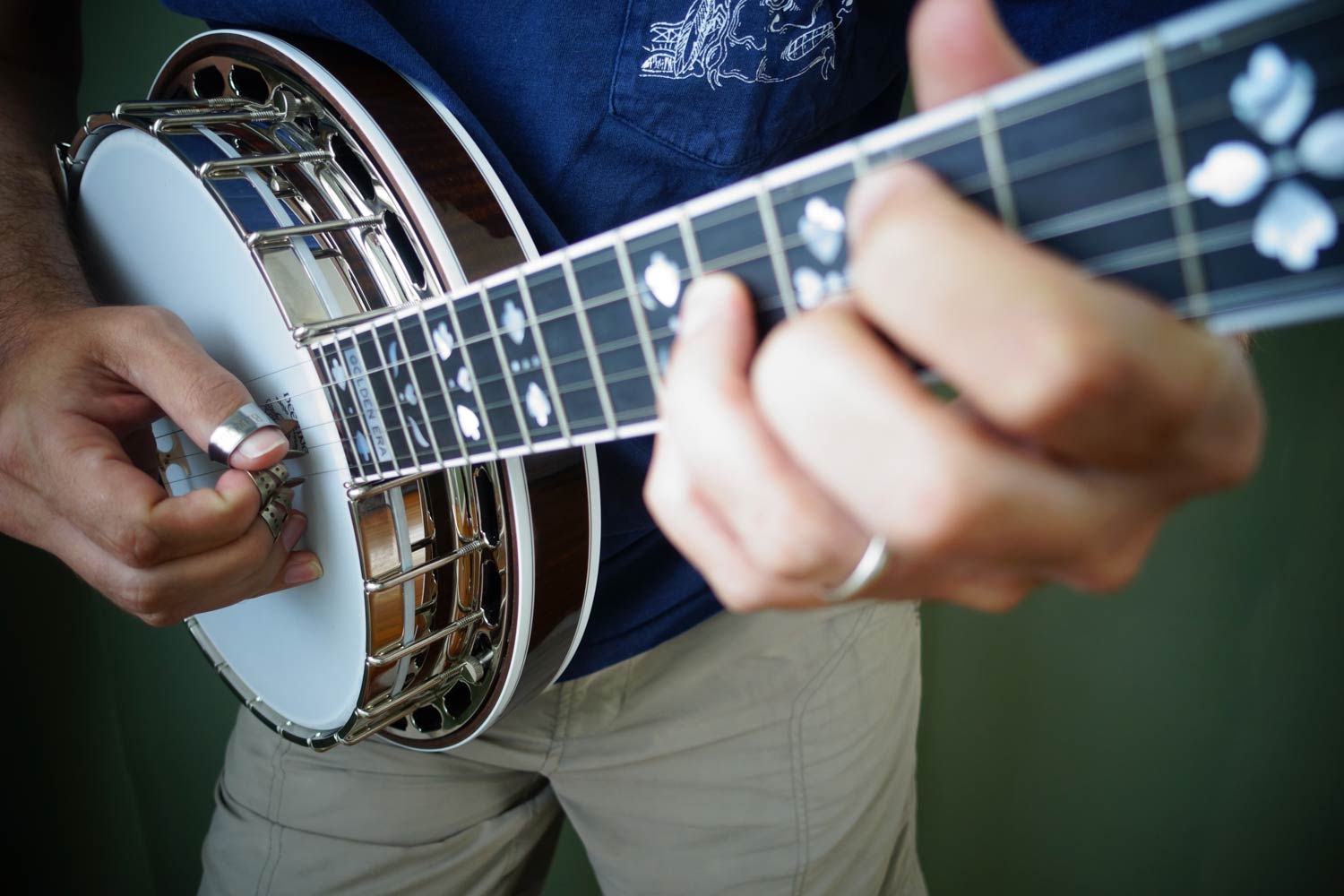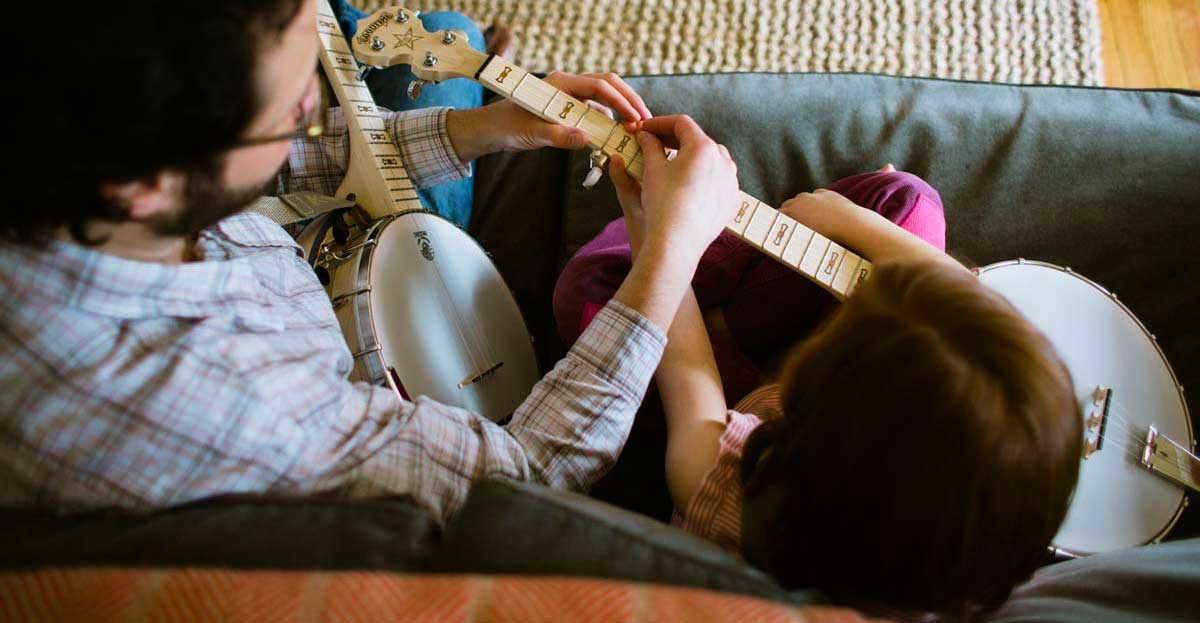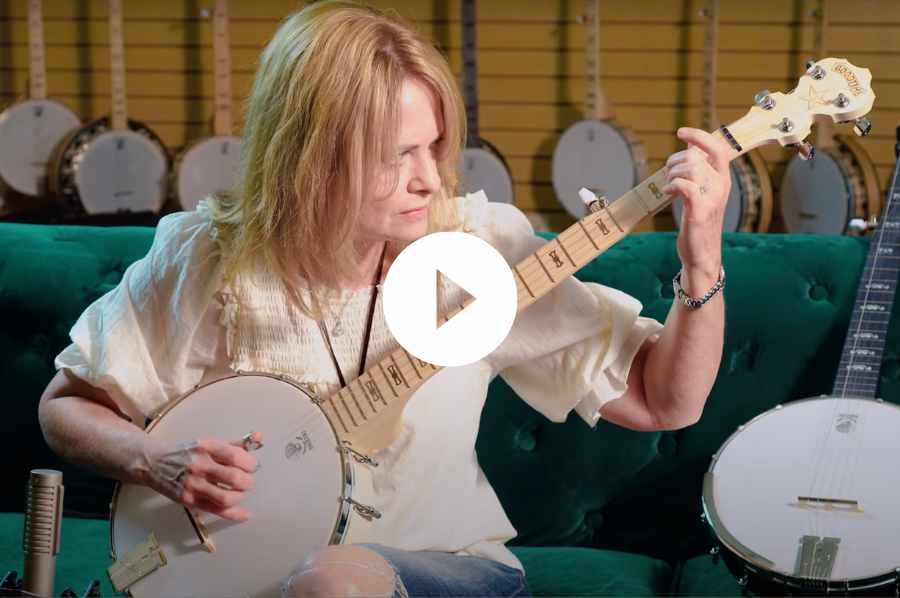Description of Different Types of Banjos
Eating at a new exotic restaurant is fun, but it can be sometimes be a bit confusing to know which entrée you will like the best! Choosing your first banjo or choosing one that best suits the kind of music you want to play can sometimes be that confusing!
Many folks think that there are just 5-string and 4-string banjos. Well, that is “sort of right” but within those choices there are also a number of scale lengths to choose from.
While you should never be limited by your instrument in choice of music, there are certain scales that work better for various kinds of music and it is this we will be discussing today.
5-String Banjos:
We make so many 5-string banjos here at Deering. I counted 70 standard models - but they are not all alike. We have different tonal woods, different tone rings, different banjo heads, different pickups installed, and different scale lengths.
We will focus today on scale and type of music, but always with the thought that you are the arbiter of the kind of music you like to play best on your banjo.
The standard 22-fret, 5-string banjo with a scale length of 26 ¼” is one of the most versatile banjos you could ever play. Be it openback or resonator, this banjo can be used for bluegrass, country, gospel, jazz, folk, rock,classical. Pretty much any kind of music you want to play. Usually tuned to open G (G,D,G,B,D) tuning, with the use of a capo and some sort of 5th string capo device, you can pretty much choose your tuning on this banjo to fit your song.
There are any number of good teaching materials out for 5-string banjo. There are books, DVDs, charts, free YouTube videos, and it is usually easier to find a 5-string banjo teacher…though finding a banjo teacher in the first place can sometimes be challenging!
Parlor Banjos:
We make a lovely, shorter scale parlor 5-string banjo in our Goodtime line of banjos. With only 19-frets but still tuned to open G, this little banjo is just “short enough” to accommodate smaller framed individuals as well as children. Since they weigh only 4-5 pounds, weight is never an issue on an openback or resonator back Parlor Goodtime banjo. The scale is 23” and though it is tuned to open G, you could tune it to A if you like.
Long Neck Banjos:
The “big daddy” of the 5-string banjo would probably be the long neck banjo. With a scale length of 32 7/64” and 25 frets, it is tuned to E (E,B,E,G#,B). This banjo was the idea of folk era icon Pete Seeger and many know the songs of the Kingston Trio who further popularized the banjo during the height of the folk music. To me the beauty of this banjo is that you can use the same chord forms that you use on the 22-fret, 5-string banjo only you have the lovely “low” sound that comes with E tuning.
What’s the additional beauty of these 5-string banjos? They can be played in various styles of play - bluegrass, strumming, clawhammer. It just seems like a limitless banjo for everyone to try.
4-String Banjos:
This banjo is used for some of the liveliest musical choices…the kind of music that gets toes tapping and hands clapping. You usually think of a 4-string with Irish music or Traditional Jazz (Dixieland), but these banjos are really quite versatile. Standard tenor tuning is the same as viola or mandola and the Irish tenor tuning is the same as the mandolin or violin - only an octave lower so try these banjos on some classical or bluegrass tunes. Throw some Bill Monroe licks on these banjos and you'll see what I mean!
17-Fret Tenor Banjos:
The 17-fret tenor banjo is most commonly thought of as the “Irish tenor” and is usually tuned G,D,A,E (4th-1st) with a scale length of 21”. We make this scale in both our Goodtime and upper line Deering banjos.
19-Fret Tenor Banjos:
The 19-fret tenor banjo is usually set to C,G,D,A (4th to 1st). This one can be used for Traditional Jazz (Dixieland) and Irish music. The 19-fret tenor is popular with the well known Dropkick Murphys Band.
Plectrum Banjos:
The 22-fret four string banjo is called a Plectrum banjo and is tune C,G,B,D (which 5-string players may recognize as drop C tuning). Here is an interesting historical note. Did you know that a flat pick was originally called a “plectrum”? Yes, that is where the plectrum banjo got its name because it is traditionally played with a flat pick. This is used for traditional jazz music and you all may have seen the players at Disneyland with their straw hats and plectrum banjo picking away for the street crowds.
This one can also be tuned to D,G,B,E (also know as Chicago tuning) so you guitar players out there should really get one of these banjos!
6-String Banjos:
Banjo is experiencing a new Renaissance. More and more folks are coming to banjo for the first time or are returning to it after many years. Some of the interest is coming from the guitar playing musician who wants to expand his musical repertoire. Many of them would like to take their existing skill set and transfer it to the banjo. Enter the 6-string! While this is not a new instrument created by Deering Banjos and has been part of the banjo world for decades, we do make the best 6-string on the market today. Our 6-string banjos have been used by many main stream artists and bands you are familiar with such as Taylor Swift, Keith Urban, Joe Satriani, Taj Mahal, John Fogerty, and many more.
Why so popular? Because it’s just plain fun to play and to quote them “it sounds so cool.”
The musical versatility of this banjo is legend. Many guitar sessions players own them so that they can add that “banjo sound” to a new recording. You can play jazz on it as did the famous Johnny St. Cyr of Louis Armstrong’s band. You can play country like any number of main stream artists today. Harvey Reid, Deering’s first endorsing artist on this instrument, has used it in any number of musical genres.
12-String Banjos:
12-string banjo? Yes, the unique 12 string banjo is played just like a 12-string guitar.
The effect is delicate, lacey, and different from anything you have ever hard. Again, if you listen to Harvey Reid’s “The Artistry of the 6-string Banjo” CD, you will know exactly what we are talking about.
These brief descriptions give only general guidelines. We urge you to contact us or check out our FAQ section on Banjo Buying Tips for more specific questions. Talking about banjos is what we really love to do!

















send IMFO on smallest Banjoe.
The tenor banjo can also be made with 20 frets. This gives the player the capability to play a high “F” chord when finishing a tune in that key (e.g., the “William Tell Overture.”) It also widens the fret spacing just a bit, which makes playing single string melody up-the-neck a bit easier. I own tenor 3 banjos, and had them all made with 20 frets.
En Algérie, le véritable banjo ténor à 4 cordes était jadis très utilisé dans la Musique Algéroise appelée Chaâbi mais de nos jours on retrouve dans les orchestres du chaâbi deux banjo à 6 cordes avec deux accordages différents. le banjo avec des sonorités aigues est appelé à tort " banjo ténor " [FA DO SOL RE LA RE] et celui avec des sonorités graves est bien sûr le banjo-guitare [RE LA MI SI FA# RE] en commençant par le bas
i just bought a four string tenor banjo which I am going to learn could you recommend any books for beginners I cant read music perhaps I would have to take lessons I would appreciate your advice many thanks.
Leave a comment